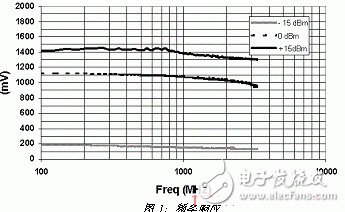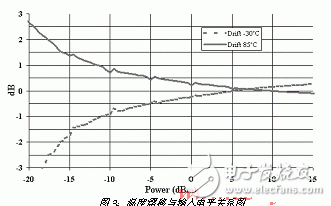With the application of RF transmission, the need for RF power measurement has also arisen. The simplest method is based on the well-known peak detector, which is a device that extracts the amplitude of the signal. When amplitude modulation is performed, the information of interest can be directly obtained, and when the measured parameter is the power of the signal, conversion must be performed. Diode detectors have been used for decades and are still widely used today. The development of high-capacity wireless communication systems has validated the design of complex integrated circuits from temperature-compensated diode detectors to dedicated logarithmic detectors. Choosing the right solution means identifying the key parameters correctly. Integrated RF detectors are now widely used, and integrated RF detectors have a tendency to replace traditional diode detectors whenever higher sensitivity and stability are required. This article describes the choice of RF power detector frequency response, sensitivity and linearity and ease of use.
Key parameters of the detector Operating frequency:The RF signal frequency may be the first parameter to consider when selecting a detector. The detector must be fast enough to extract the amplitude of the signal. It must also provide a constant response over a relatively large frequency range. For example, detectors used to measure the transmission power of GSM mobile phones must have the same sensitivity in the range of 880 MHz to 915 MHz. To meet this requirement, two internal parameters are critical: the sensitivity (or gain) change to frequency ratio, and the input impedance match. The NCS5002 is a perfect example of frequency response optimization (Figure 1). Input matching components are already integrated into the device to ensure extremely low VSWR. The device is based on a wideband architecture and operates from 100MHz and below up to 3GHz. These two features ensure minimal variation in the frequency range and simplify the design because they do not require additional calibration.


Sensitivity is the ability of the detector to return useful information when a very low input signal is applied to the input. So the definition of sensitivity is closely tied to the ADC/DAC resolution used to process the signal. If the detector is connected to an ADC with 1mV resolution, the designer will check if the signal level it wants to detect is greater than 1mV at the detector output. The higher the sensitivity, the better the detector, but this is not possible by simply increasing the gain. When there is a large signal change, the maximum input signal must also have the appropriate accuracy, which requires a good dynamic range. For this reason, detectors are divided into two broad categories: linear and nonlinear detectors. Good linearity is required for amplitude modulated demodulation or when the designer is unable to calibrate the detection curve. The NCS5000 describes such devices. The compensated Schottky diode detector provides extremely high linearity (Figure 2). Since this is a unity gain device, the sensed voltage can be read directly, its characteristics are repeatable and calibration is not required. When a large detection range or high sensitivity is required, the unity gain device can no longer be used. The detected signal must be amplified. The disadvantage is that the largest input signal is also amplified, which can cause the detector to saturate. The best solution is nonlinear amplification. For the smallest input level, the gain is maximized. The gain becomes smaller as the detected signal approaches the saturation voltage. Because the device is not linear, only minimal calibration is required. There are many nonlinear detectors on the market, ranging from true logarithmic detectors manufactured with expensive RF processes to monolithic linear detectors, taking into account dynamic range and complexity. The NCS5002 is an example of a monolithic linear detector. The nonlinear detector can operate between -30dBm and +20dBm, and because the characteristic curve is divided into two linear sections, the calibration is also relatively simple.

2000W Digital Tv Transmitter,Wireless Fm Digital Transmitter,2Kw Wireless Digital Tv Transmitter,2Kw Video Digital Tv Transmitter
Anshan Yuexing Technology Electronics Co., LTD , https://www.yxhtfmtv.com